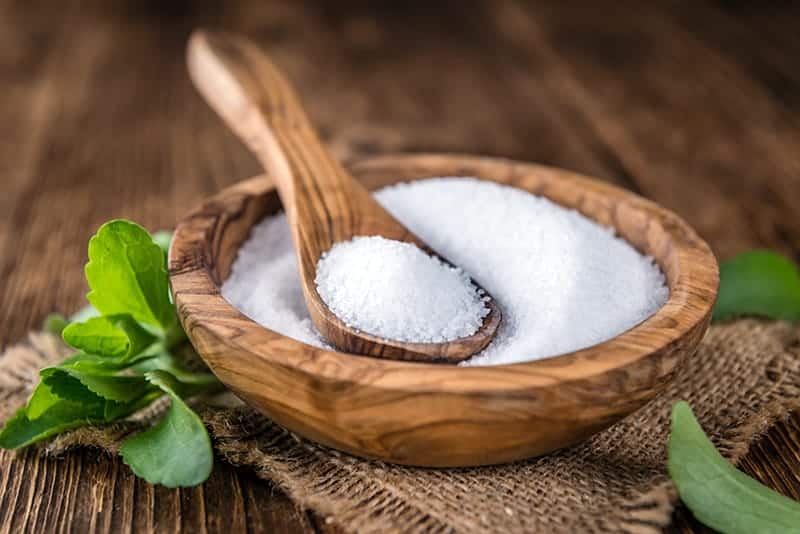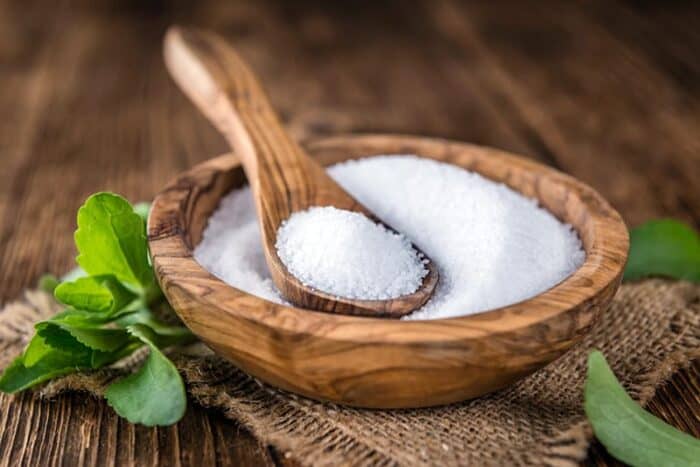This post may contain affiliate links. See my privacy policy for details.
If there’s one thing that all people can agree on, it’s that sweet things are absolutely awesome. Sweet flavors, like in tasty homemade Cinnamon Rolls, give us that base, animalistic pleasure of eating something delicious, but it, unfortunately, comes at a cost. Hopefully, Isomalt can provide at least some solution.
Despite how tasty sugar it is, it has plenty of problems: it rots your teeth, leads to heart issues, and can result in diabetes. With the use of artificial sweeteners, however, we can get the same great sweet taste, but without many of the horrible side effects. Isomalt is one of the most common sugar substitutes, but just what exactly is Isomalt, and where are you supposed to get it?

What is Isomalt
Despite its frightening sounding name, Isomalt is nothing more than an artificial sugar substitute.
It is, however, not actually sugar. It is a sugar alcohol, which means that, while it is similar to sugar in its chemical composition, the body does not actually treat it as a sugar.
The body is only capable of absorbing Isomalt at about 50% of the rate of sugar. This means that Isomalt has a negligible effect on the body’s blood sugar levels, thus not influencing the release of insulin. This is excellent news for those with diabetes, as it means that they can enjoy sweet food without having to worry about spiking insulin.
Even better, it does not contribute to tooth decay whatsoever. So you can eat as much sweet as you like without having to worry about your teeth rotting away.
While it does have a few small negative consequences as a result of primarily relying on Isomalt, it is a far healthier substitute for sugar. As well as that it is generally lower in calories by weight.
If you want to try and experience some Isomalt in your cooking, you might be a bit confused as to where you are actually supposed to get it?

Where to Buy Isomalt
When you visit your local supermarket, you can probably find all manner of different sugar types: white granulated, caster sugar, both light and dark brown sugar – seemingly almost an infinite array of various types.
However, what you won’t find is Isomalt. Despite the sugar substitute’s common use in the food preparation industry, it is surprisingly tricky to get a hold of it commercially. Thankfully, the internet is there to save the day. You only need to search online for Isomalt, and you will almost immediately find all kinds of different stores offering it for sale.
The only annoyance is that it will usually be only sold in large quantities, typically at least one kilo at a time. This isn’t really a problem if you plan on using it frequently, but if you only want to try it out, you might find yourself burdened with a large sack of sugar substitute you don’t want. Unfortunately, there isn’t really any other option. If you are desperate to make sure you can try it out before buying it for yourself, then try and find some food that is made using Isomalt. That way, you can find out if you like the base taste of the artificial sweetness without having to lumber yourself with a giant bag of the stuff.
But what do you do if you want a sugar substitute but don’t enjoy the taste of Isomalt? Are there other options for substitutions?
Isomalt Substitutes
The obvious substitution for Isomalt is plain white granulated sugar. However, if you are cooking with Isomalt, it is likely you are looking for some kind of viable sugar substitute, either out of concern for your teeth or your general health.
If you are opposed to the use of Isomalt for whatever reason, or you just don’t like the taste, you can use all kinds of different artificial sweeteners. After all, while Isomalt is a great substitute, it has been linked to gastric distress with long term use, as well as a significant uptick in flatulence.
Common substitutes include things like Sucralose, the super sweet sugar replacement, or Sorbitol, as well as the very commercially natural Stevia. These act to increase the sweetness of food, but without any of the calories whatsoever.
One thing to keep in mind is that other artificial sweeteners are completely calorie-free, as well as being massively sweeter than regular sugar. Isomalt is probably the closest in taste to regular sugar, while still having about half the calories of normal white sugar.
So, if you are looking to substitute Isomalt for something else, make sure that you are prepared for the difference in taste – artificial sweeteners can taste, somehow, both too sweet and not quite right at the same time.












Leave a Comment or Recipe Tip